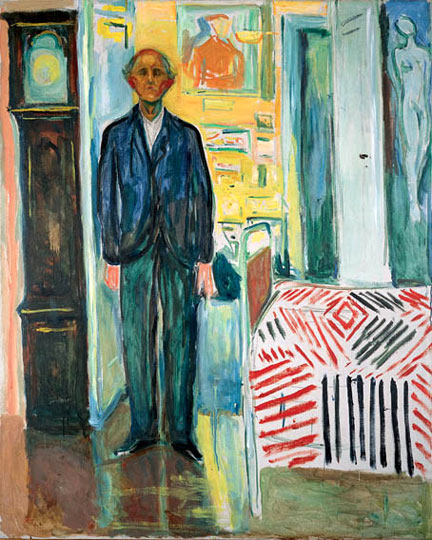Last night the clocks went forward, marking the start of British Summertime, so this week’s horologically inspired choice of picture is Edvard Munch’s Self-Portrait: Between the Clock and the Bed. Completed in 1942, when Munch entered his eightieth year, the painting can be seen in the Munch Museum in Oslo.
Munch painted the picture in the large house on his private estate of Ekely in Norway, where he spent much of the last twenty-five years of his life in virtual seclusion, attempting, hermit-like, to recover his health after the excesses of his youth. A restless and footloose young man, he had spent years on the move, flitting between Paris, Berlin and Scandinavia, living in shabby hotels and run-down boarding houses. Fuelled by drink (“the devil alcohol”, he called it) and by the trauma of losing both his mother and sister to tuberculosis, he had pushed his painting to its expressive limits. He became famous for his pictures of human beings in extremis, such as The Scream, painted in a style poised between caricature and abstraction. “Without anxiety and illness,” Munch once said, “I would have been like a ship without a rudder”.
But after an alcohol-induced nervous breakdown in 1908, he increasingly settled into a quiet life. His art declined correspondingly. He rarely painted from direct experience any more, only from fading memories, revisiting the themes of pictures he had painted in his youth but emptying them of energy and feeling. His draughtsmanship lost its coiled vitality; and he took to applying colour, which had been saturated and intense, in his early work, in thin, broad washes. Self-Portrait: Between the Clock and the Bed, which is one of his last paintings, is compromised by a certain weakness and vapidity. The artist’s own figure is clumsily...


